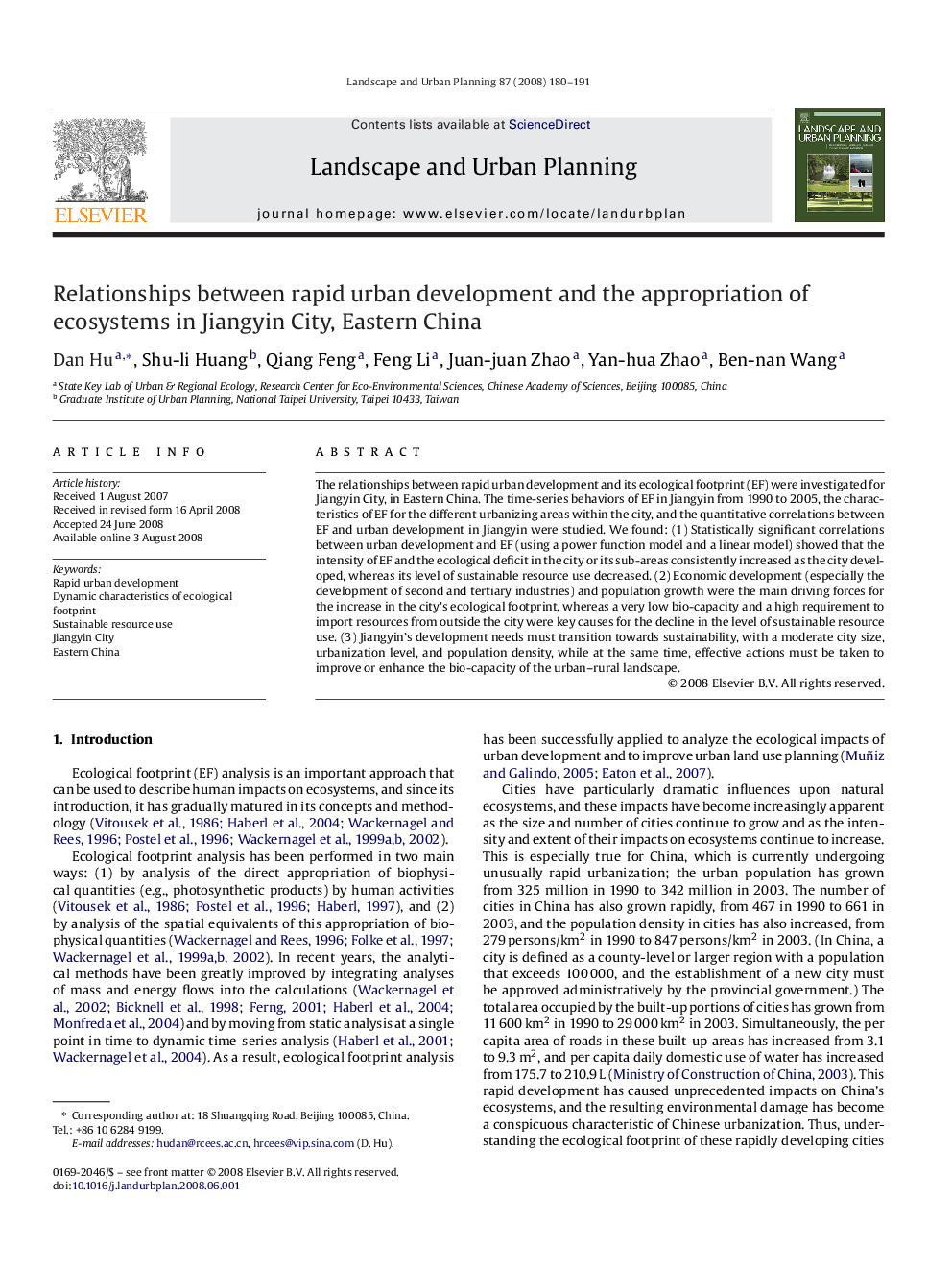| Article ID | Journal | Published Year | Pages | File Type |
|---|---|---|---|---|
| 1050380 | Landscape and Urban Planning | 2008 | 12 Pages |
Abstract
The relationships between rapid urban development and its ecological footprint (EF) were investigated for Jiangyin City, in Eastern China. The time-series behaviors of EF in Jiangyin from 1990 to 2005, the characteristics of EF for the different urbanizing areas within the city, and the quantitative correlations between EF and urban development in Jiangyin were studied. We found: (1) Statistically significant correlations between urban development and EF (using a power function model and a linear model) showed that the intensity of EF and the ecological deficit in the city or its sub-areas consistently increased as the city developed, whereas its level of sustainable resource use decreased. (2) Economic development (especially the development of second and tertiary industries) and population growth were the main driving forces for the increase in the city's ecological footprint, whereas a very low bio-capacity and a high requirement to import resources from outside the city were key causes for the decline in the level of sustainable resource use. (3) Jiangyin's development needs must transition towards sustainability, with a moderate city size, urbanization level, and population density, while at the same time, effective actions must be taken to improve or enhance the bio-capacity of the urban-rural landscape.
Related Topics
Life Sciences
Agricultural and Biological Sciences
Ecology, Evolution, Behavior and Systematics
Authors
Dan Hu, Shu-li Huang, Qiang Feng, Feng Li, Juan-juan Zhao, Yan-hua Zhao, Ben-nan Wang,
